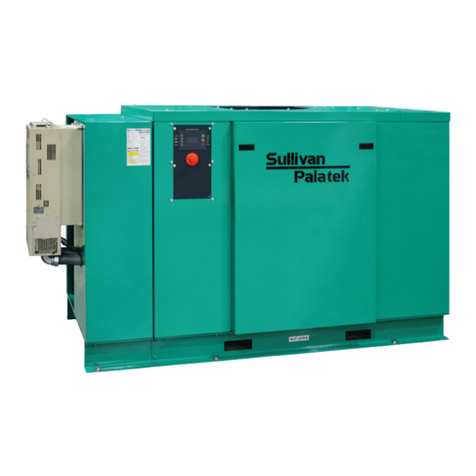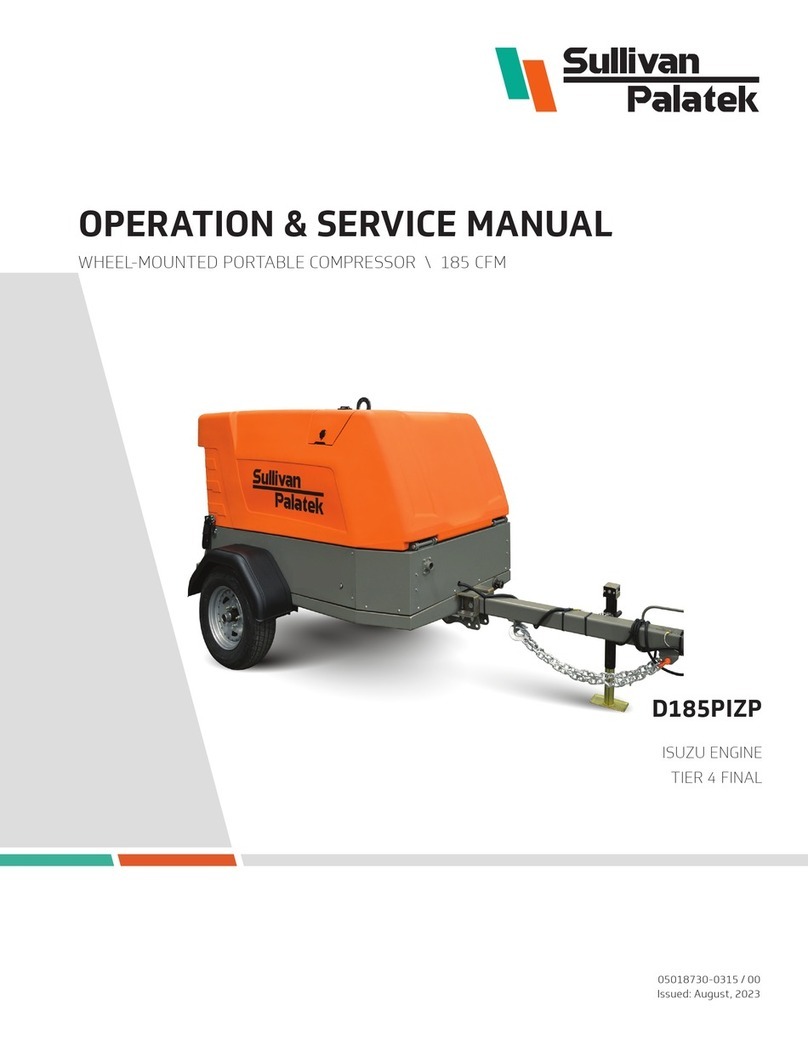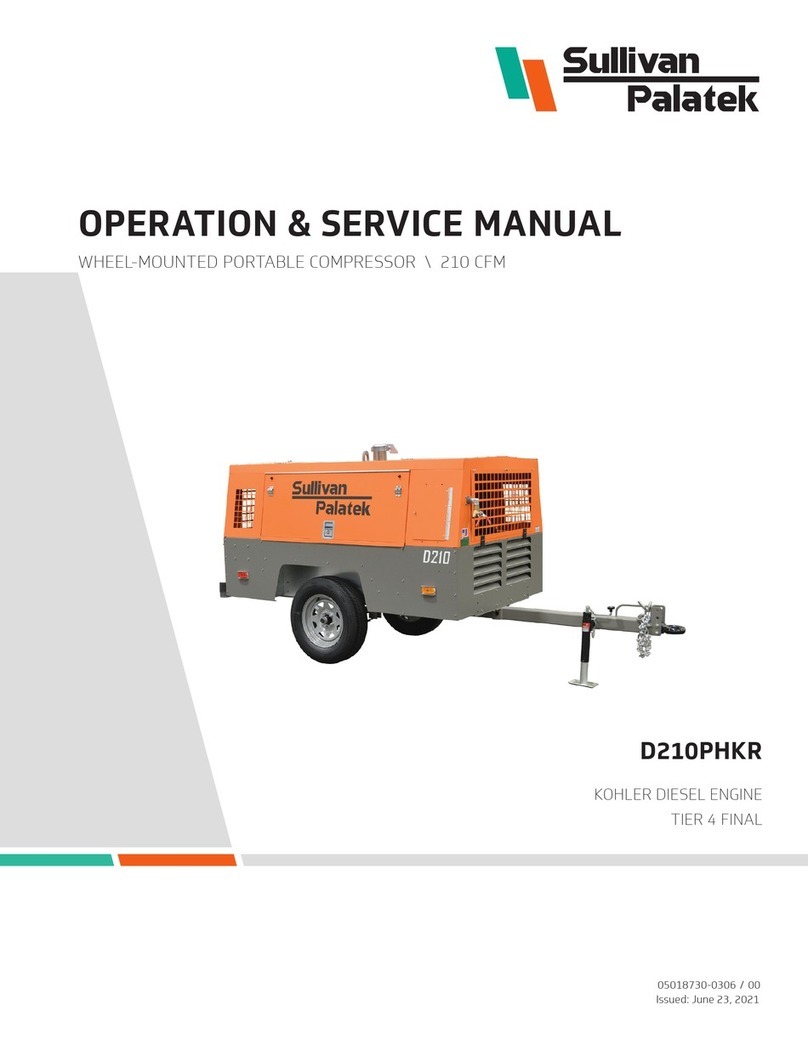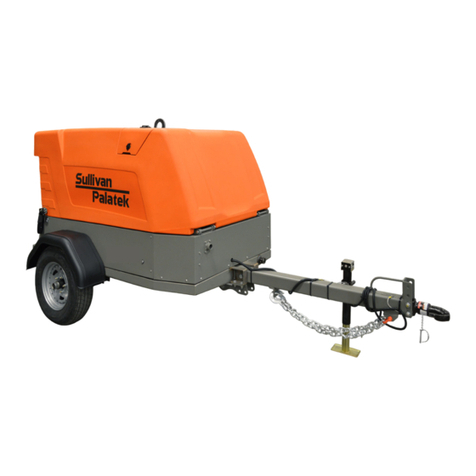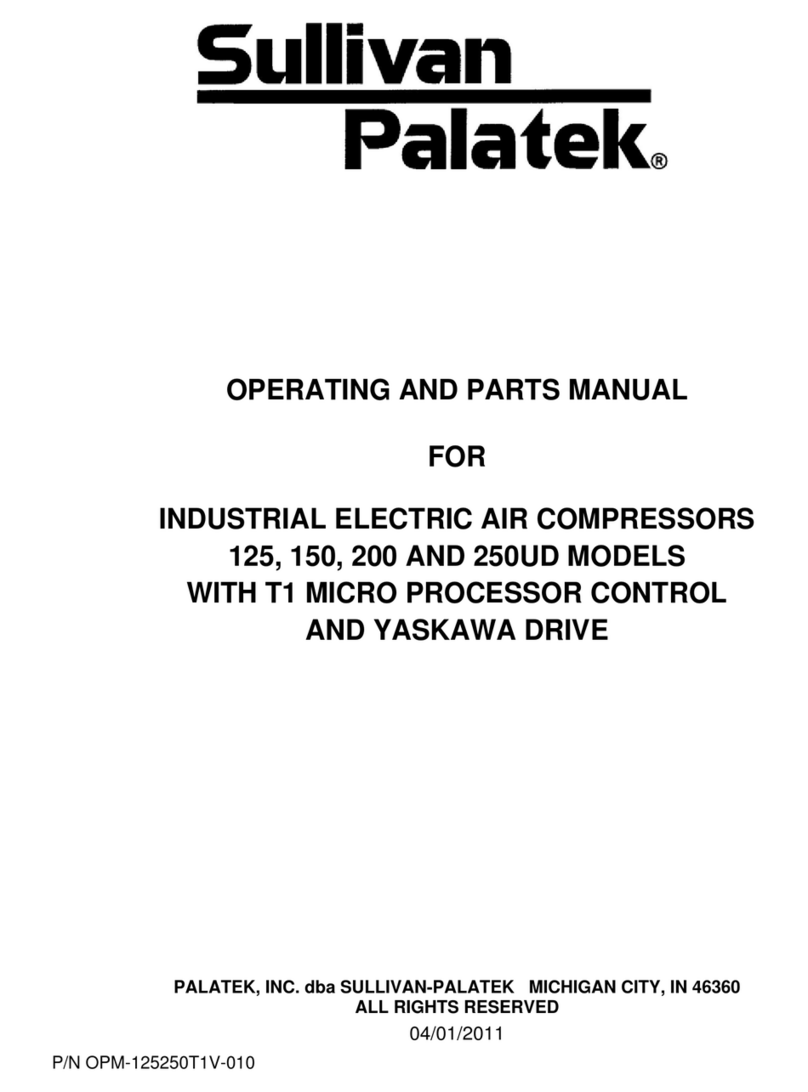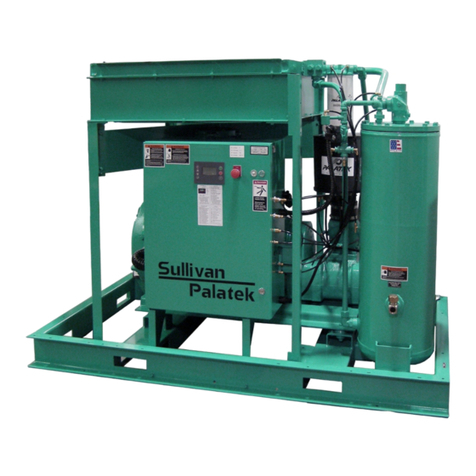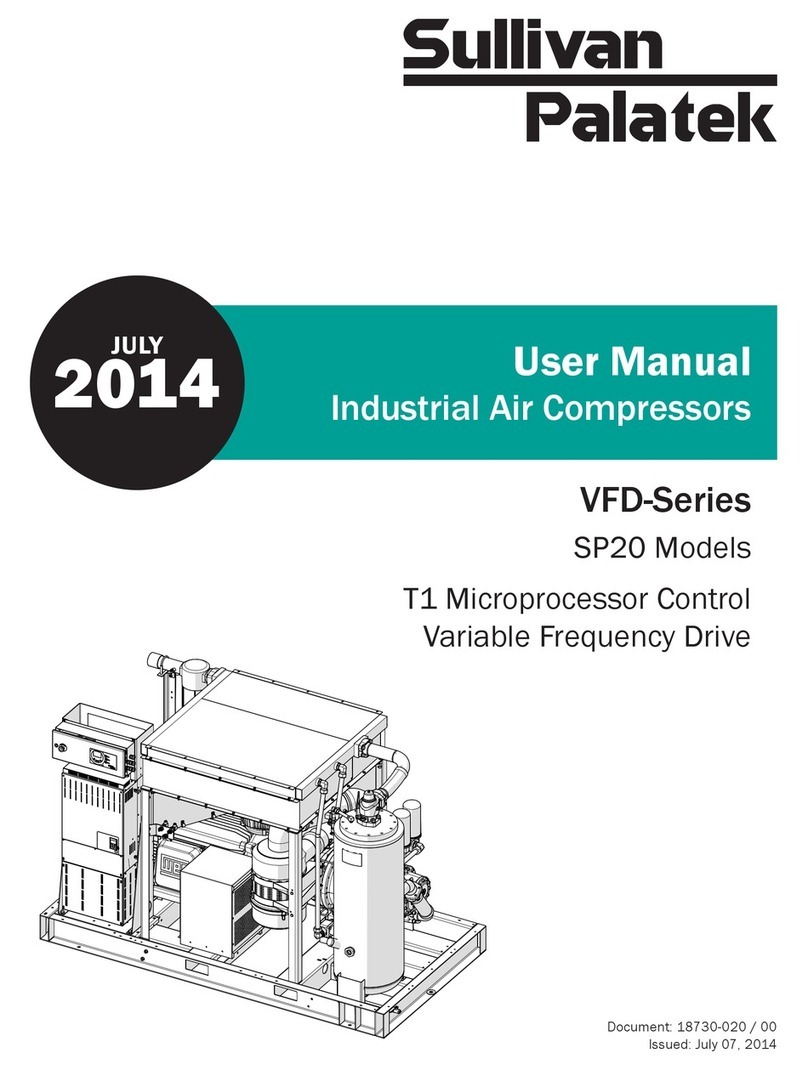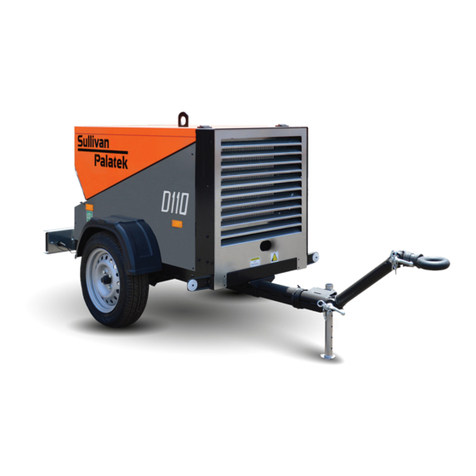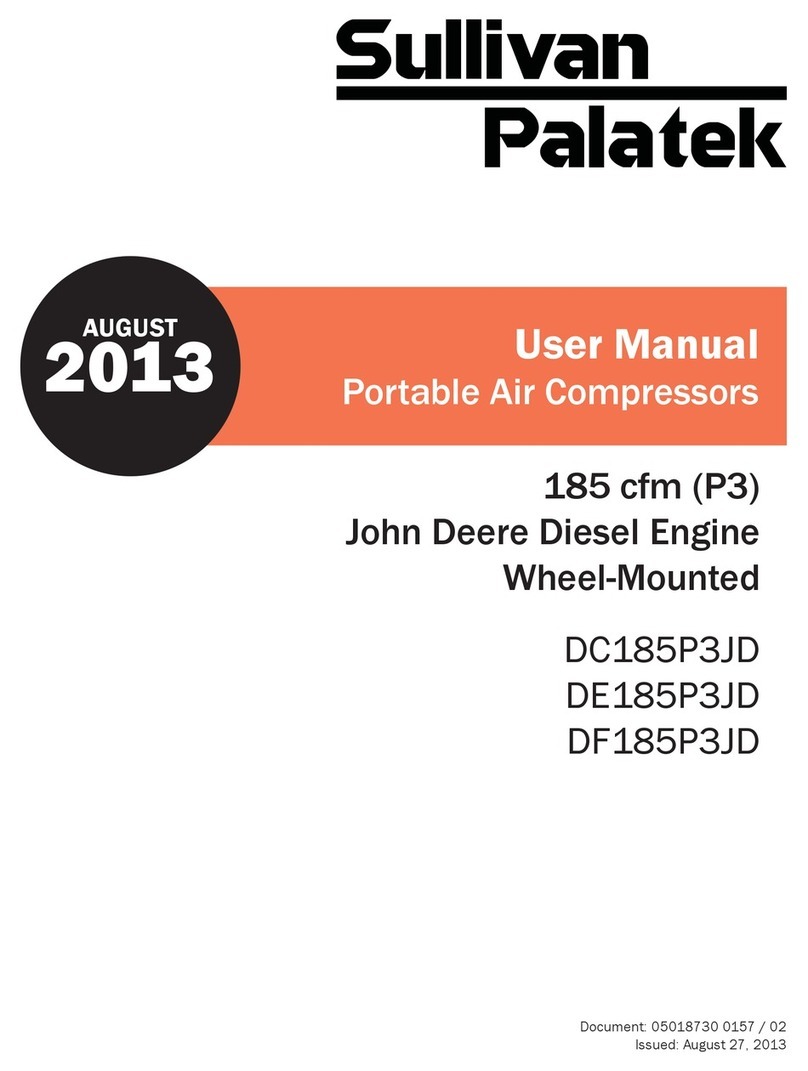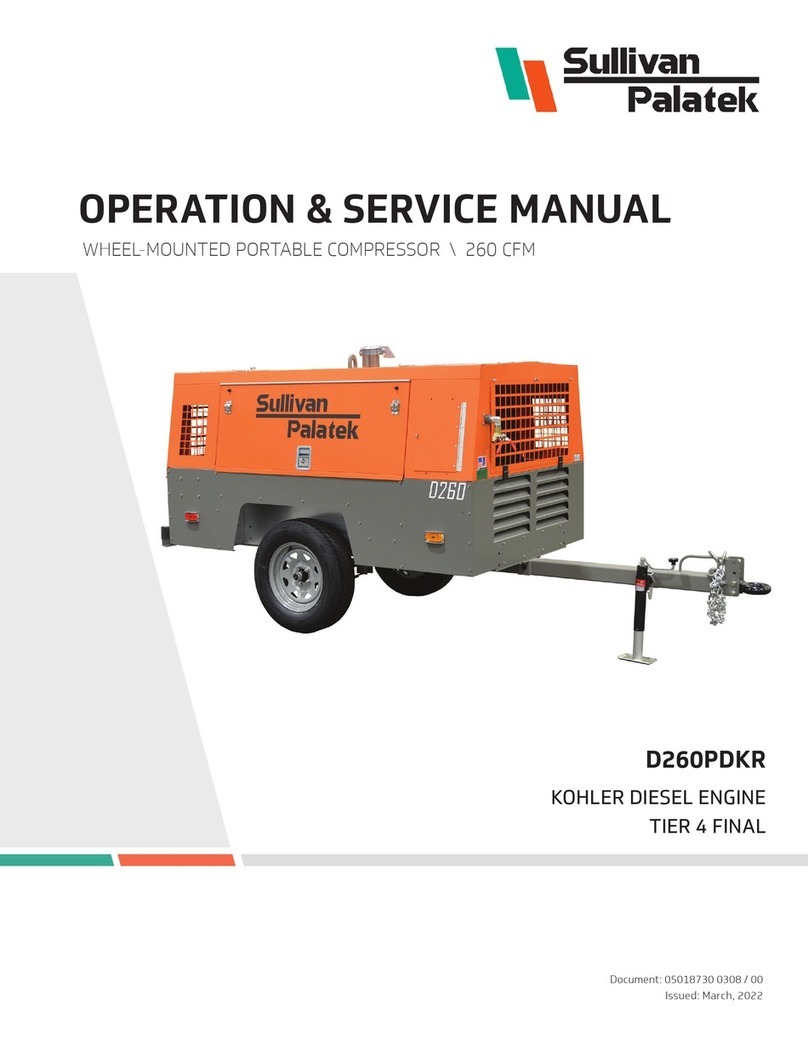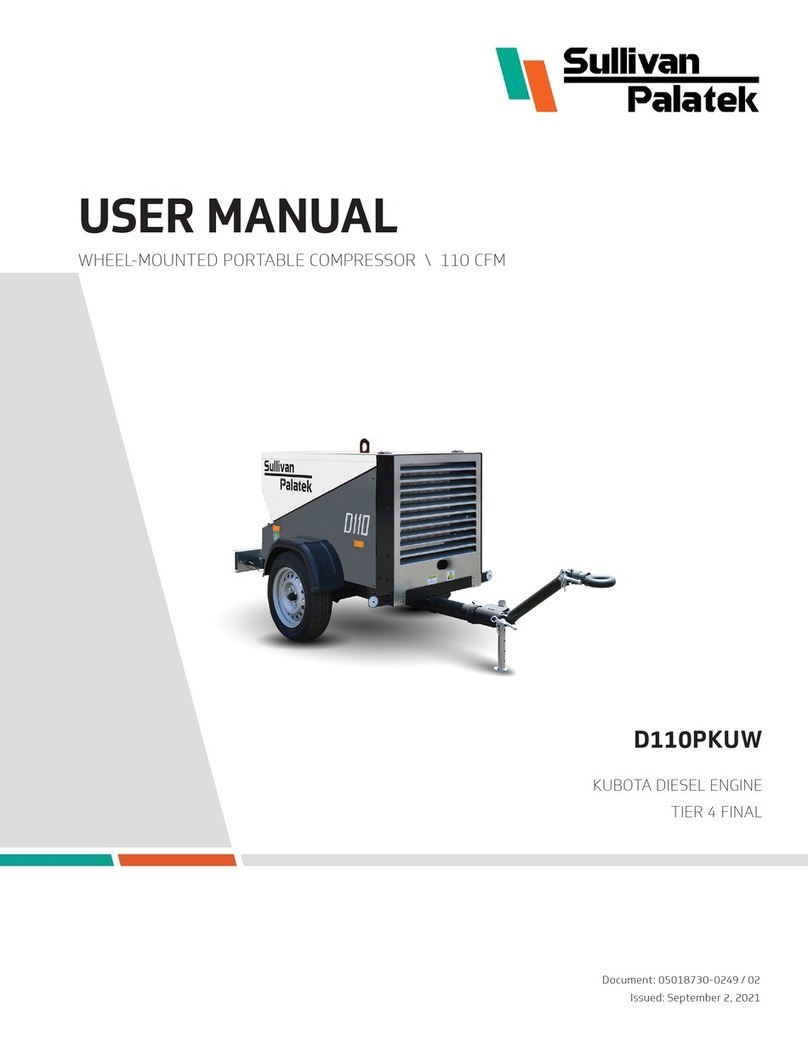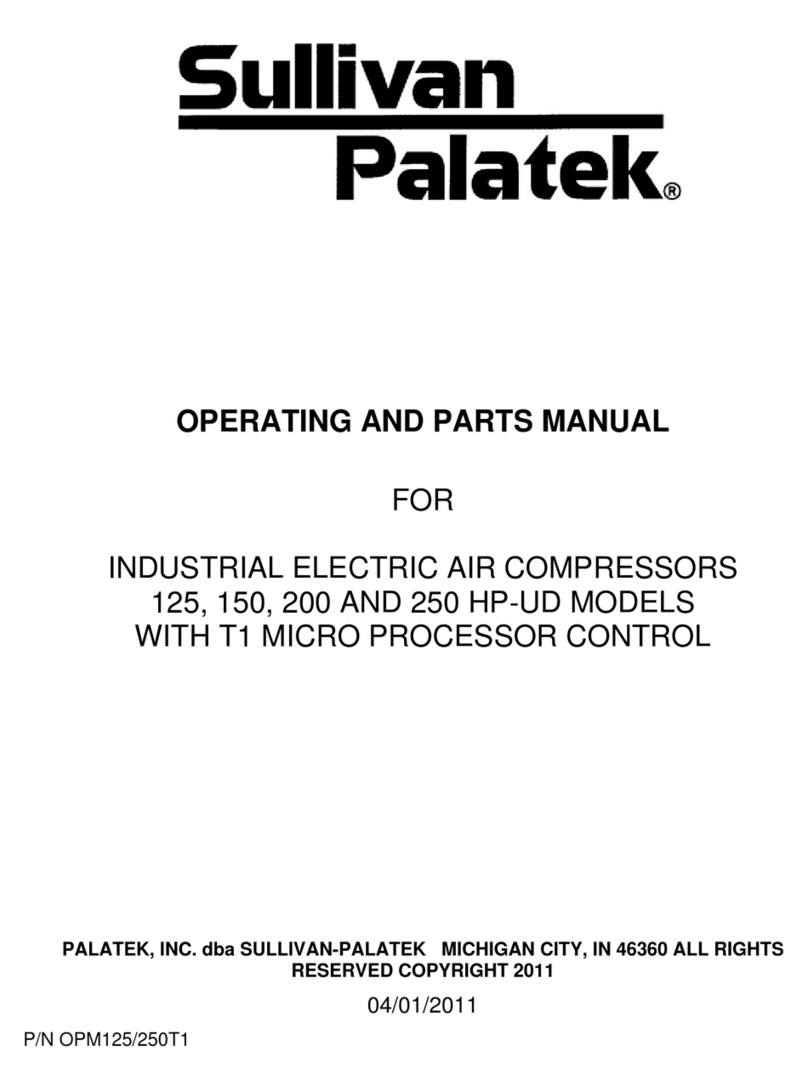
2SAFETY
1.1 RECEIVING
Each compressor is operated and tested at the Factory before shipment. This testing assures that the unit
is operating properly and that the compressor will deliver its rated capacity. Regardless of the care taken at
the factory, there is a possibility that adjustments may be altered or damage may occur during shipment. For
this reason it is recommended that the unit be checked for proper operation and carefully inspected before it
operation.
NOTE! Satisfactory performance of the compressor depends upon the operator’s knowledge of the controls,
instruments, and recommended operating procedures. Consequently, the preceding sections of this manual
and also the entire Engine Operator’s Manual should be read and understood before attempting to start and
operate this machine.
1.2 LIFTING
»
with OSHA Standards 29 CFR 1910 subpart N, and other applicable regulations.
»
these items are found to be defective.
»
has a rated capacity of at least the net weight of the compressor plus an additional 10% allowance for
the weight of snow, ice, mud, or stored tools and equipment. If you are unsure of the weight, then weigh
»
»
» Keep all personnel out from under and away from the compressor when suspended.
»
»
» Do not leave suspended compressor unattended.
» Set compressor down only on level surfaces capable of supporting at least its net weight plus an
additional 10% allowance for the weight of snow, ice, mud, or stored tools and equipment.
1.3 GENERAL SAFETY
Safety is a prime consideration in the design and manufacture of the compressor components. Ultimately,
the responsibility for safe operation rests with the individuals who use and maintain the compressor.
machinery:
» Only trained and authorized personnel who have read and understand this user’s manual should operate
the air compressor. Failure to follow the instructions, procedures, and safety precautions in the manual
will increase the possibility of accidents and injuries.
» Never start the air compressor unless it is safe to do so. Do not attempt to operate the air compressor
with a known unsafe condition. If an unsafe condition exists or maintenance is required, tag the air
compressor and render it inoperative by disconnecting the battery so others who may not know of the
unsafe condition cannot attempt to operate it until the unsafe condition is corrected.
» Use and operate the air compressor only in full compliance with all pertinent Federal, State and Local
codes or requirements including OSHA, EPA and other relevant agency requirements.
» Do not modify the compressor or install attachments without consulting the manufacturer.
» Known and potential hazards associated with the operating and servicing of portable air compressors
are detailed in the following pages. Not all hazards can be anticipated and the operator of the equipment
is ultimately responsible for identifying hazardous and dangerous conditions, avoiding dangerous
operation and preventing accidents.
1.4 PRESSURE RELEASE
»
items. Pay attention to the possible residual pressure when you disconnect a device from a pressurized
